When it comes to choosing the perfect hoodie, one of the most important factors to consider is the fabric. The right material can make a significant difference in terms of comfort, durability, and overall performance. What’s more, even for the same hoodie design, if you are using different fabrics, the result will be completely different.
First of all, let’s delve into three main categories of hoodie fabrics compositions: natural fibers, synthetic fibers, and fabric blends. Each category offers distinct characteristics and benefits, so let’s take a look!
Natural Fibers
Cotton
Cotton is a popular choice for hoodies due to its softness, breathability, and natural comfort. It is a natural fiber that allows air to circulate, keeping you cool and comfortable. Cotton hoodies are perfect for everyday wear, providing a cozy and relaxed feel. They are also highly absorbent, making them ideal for moisture-wicking during physical activities. However, pure cotton hoodies may shrink and wrinkle more easily, so proper care and maintenance are important.
Linen
Linen is another natural fiber that offers excellent breathability and a lightweight feel. It is known for its natural cooling properties, making it suitable for hoodies in warmer climates or for layering during transitional seasons. Linen hoodies are highly absorbent and quickly wick away moisture from the body. Additionally, linen is a durable fabric that becomes softer with each wash. However, it is worth noting that linen garments tend to wrinkle easily and may require ironing.
Bamboo
Bamboo fabric is a sustainable and eco-friendly option gaining popularity in the clothing industry. It has similar properties to cotton, offering softness, breathability, and moisture-wicking capabilities. Bamboo hoodies are known for their exceptional softness against the skin and their ability to regulate body temperature. They are also naturally hypoallergenic and antimicrobial, making them suitable for individuals with sensitive skin. However, bamboo fabric may require special care during washing to maintain its longevity.
Wool
Wool is a natural fiber renowned for its insulation and warmth. Hoodies made from wool provide excellent thermal regulation, keeping you cozy in colder temperatures. Wool fibers can wick away moisture and regulate body temperature, making them suitable for various outdoor activities. Wool hoodies are also known for their durability and resistance to wrinkles and odors. However, some individuals may find wool to be slightly itchy or uncomfortable against the skin, so it’s important to consider personal preferences and sensitivities.
Synthetic Fibers
Polyester
Polyester is a synthetic fiber widely used in hoodie production due to its durability, wrinkle resistance, and color retention properties. Polyester hoodies offer excellent moisture-wicking capabilities, keeping you dry and comfortable during physical activities. They are also known for their quick-drying nature, making them suitable for outdoor adventures or sports. Polyester fibers are easy to care for, as they are less prone to shrinkage and wrinkles. However, some individuals may find polyester fabrics less breathable compared to natural fibers.
Nylon
Nylon is a synthetic fabric known for its strength, durability, and resistance to abrasion. Nylon hoodies are lightweight and provide good insulation, making them suitable for outdoor activities or layering during cooler weather. They offer excellent moisture-wicking properties, ensuring you stay dry and comfortable during physical exertion. Nylon fabrics are easy to care for and dry quickly. However, they may not be as soft against the skin as natural fibers.
Rayon
Rayon, also known as viscose, is a semi-synthetic fabric derived from natural cellulose fibers. It offers a soft and smooth feel similar to natural fibers. Rayon hoodies provide good breathability and moisture absorption, keeping you comfortable in various weather conditions. They have a luxurious drape and are often used for more stylish and fashionable hoodie designs. Rayon fabrics may require special care during washing to avoid shrinkage or damage.
Fabric Blends
Fabric blends combine two or more fibers to create a unique combination of characteristics. Common hoodie fabric blends include cotton-polyester blends, cotton-rayon blends, and wool-polyester blends. These blends aim to leverage the benefits of each fiber, offering improved comfort, durability, and performance. For example, a cotton-polyester blend combines the softness of cotton with the durability and wrinkle resistance of polyester. Fabric blends can provide a balance between natural and synthetic fibers, offering a versatile and practical option for hoodies.
It’s worth noting that cost, availability, and specific use cases may also influence your fabric choice. Natural fibers like cotton and wool may be more readily available and offer a wide range of options. Synthetic fibers, such as polyester and nylon, are often more affordable and offer enhanced durability. Fabric blends can provide a tailored solution, combining the best features of different fibers.
Selecting the right fabric for your hoodie involves considering factors such as softness, breathability, insulation, moisture-wicking properties, maintenance requirements, cost, availability, and specific use cases. Each fabric category has its own unique characteristics and benefits, so take the time to evaluate your preferences and requirements. Whether you opt for the natural comfort of cotton, the lightweight feel of linen, the sustainability of bamboo, the warmth of wool, the durability of polyester, the strength of nylon, or the versatility of fabric blends, choose the fabric that aligns with your style, comfort, and performance needs. With the perfect fabric, you’ll be ready to enjoy the coziness and style of your ideal hoodie.
Different Types of Fabric Lining
Those are some of the most common compositions. But even with the same composition, it can be many different types of fabrics. Let’s go deeper.
You may hear about French terry fabric and fleece fabric before. Actually, it means the lining (the inside) of fabrics. Both of them are popular choices for hoodies and sweatshirts.
What is french terry lining fabric?
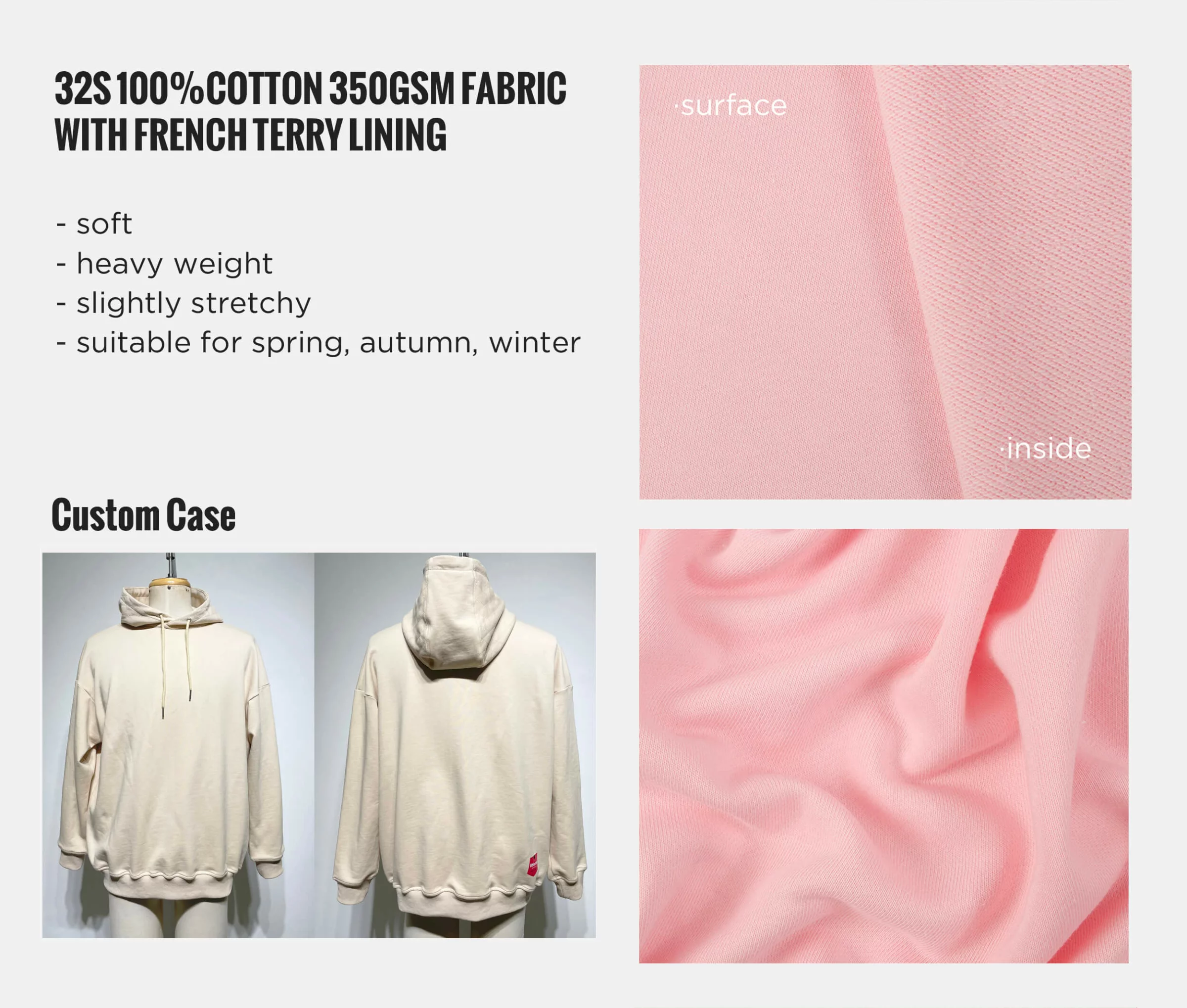
French terry is a knit fabric known for its looped back and smooth face. It is typically made from cotton or a cotton blend and is highly absorbent and moisture-wicking. The loops on the backside of the fabric create small air pockets that provide breathability and moisture management. French terry fabric is lightweight and comfortable, making it suitable for both warm and cool weather. It is commonly used in athleisure wear, activewear, sweatshirts, and hoodies.
What is fleece lining fabric?
Fleece fabric is a synthetic fabric that is known for its softness, warmth, and insulating properties. It is typically made from polyester fibers, either through a knitting or weaving process. Fleece fabric has a brushed or napped surface, which creates a fluffy texture and traps air for insulation. It is highly breathable and quick-drying. Fleece is often used in cold-weather clothing such as jackets, hoodies, blankets, and winter accessories.
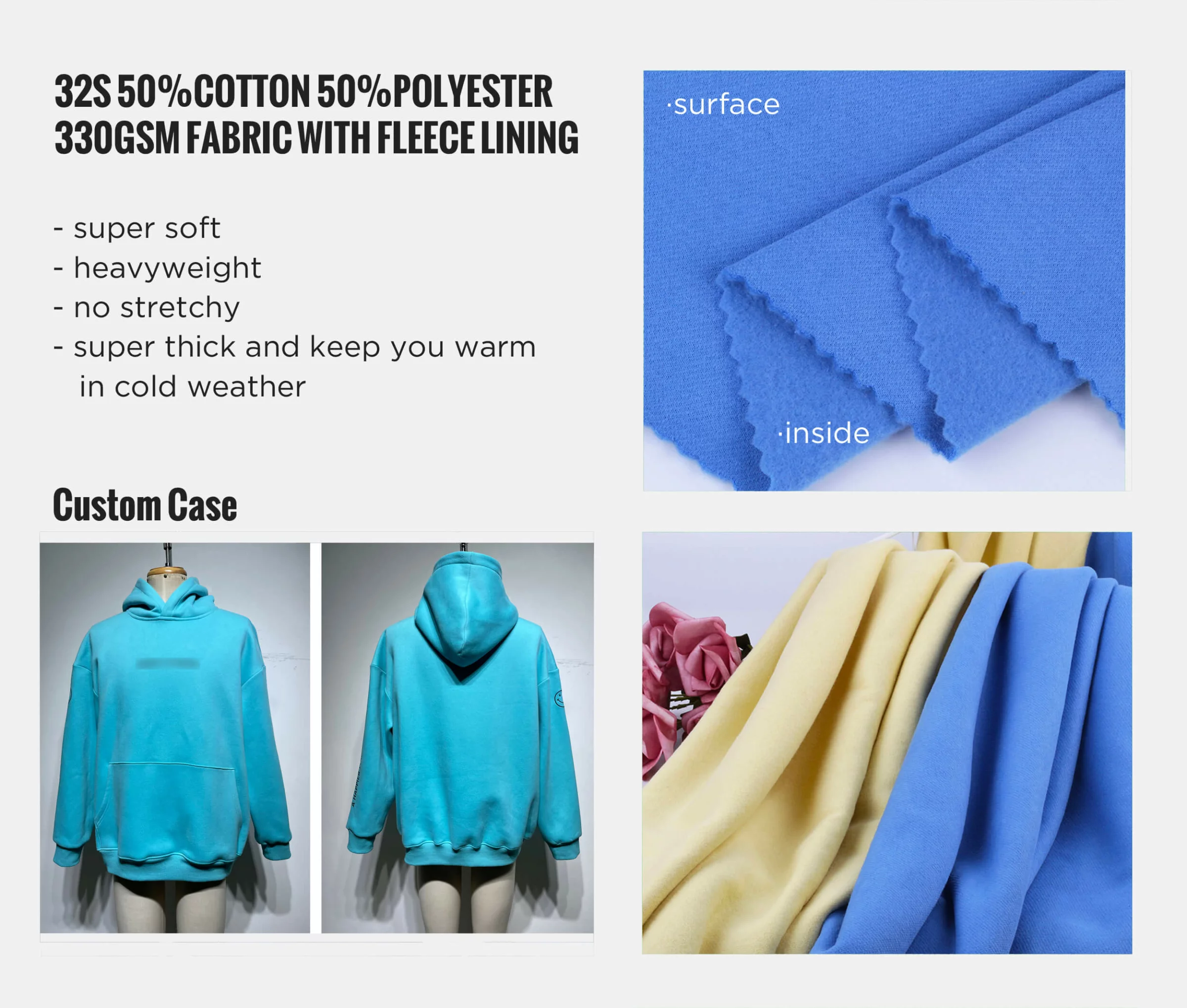
Which one to choose? French terry lining or fleece lining fabric?
Differences and Applications: The main differences between French terry fabric and fleece fabric are the materials used, the texture, and the intended applications.
- Material: French terry lining fabric is typically made from cotton or a cotton blend, while the fleece lining is normally made from polyester.
- Texture: French terry has a smooth face with looped backing, providing a textured appearance. Fleece has a soft and fluffy texture due to its brushed or napped surface.
- Insulation: Fleece fabric offers excellent insulation and is highly suitable for colder climates. French terry is lighter and more breathable, making it suitable for milder weather or layering.
- Applications: French terry is commonly used in lightweight sweatshirts, hoodies, and activewear that require moderate insulation. Fleece fabric is often utilized in jackets, outerwear, winter clothing, and blankets where warmth is the primary requirement.
- Style: If you are going to make a vintage-style hoodie, I recommend using heavyweight cotton fabric with french terry lining. If you want something super soft and warm, fleece lining fabric is your best choice.
Ultimately, the choice between French terry fabric and fleece fabric depends on the desired level of insulation, texture preferences, and the intended use of the garment or item.
2 More Types of Hoodie Fabric
Are there any fabrics without lining? The answer is YES. In this section, I will introduce 2 more different fabrics for making hoodies. They are rarely used but are more options for you.
Ponte de roma fabric
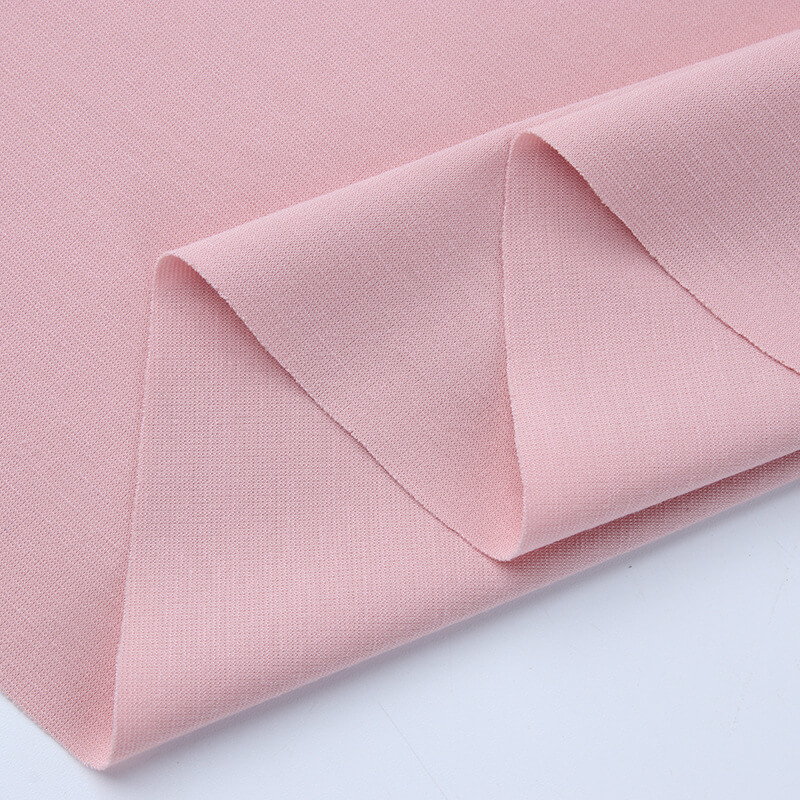
Ponte de roma is a double-knit fabric that is known for its stability, stretch, and comfort. It is typically made from a blend of polyester, rayon, and spandex, which gives it a smooth and slightly structured appearance.
Ponte de roma fabric has a medium weight, providing a good balance between warmth and breathability. It is often used for garments that require structure and a bit of stretch, such as dresses, skirts, and jacket. Due to its stretch properties and comfortable feel, ponte de roma fabric can work well for a hoodie, especially if you’re looking for a more structured and polished look compared to traditional fleece or French terry.
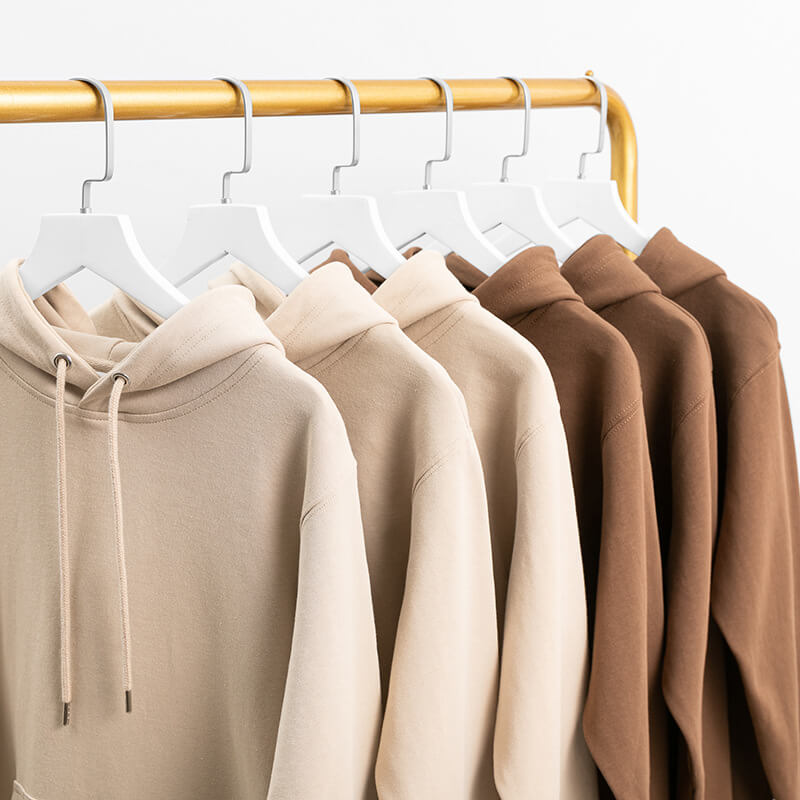
When using ponte de roma fabric for a hoodie, consider factors such as the weight of the fabric, the desired level of warmth, and the specific design of the hoodie. Keep in mind that ponte de roma is not as lightweight or fluffy as fleece, so it may provide a different look and feel. However, if you prefer a more structured and slightly heavier hoodie fabric, ponte de roma can be a suitable choice.
Polar fleece fabric
Polar fleece fabric is a synthetic fabric known for its softness, warmth, and insulation properties. It is made from polyester fibers that are tightly knitted or woven to create a dense and plush fabric. The term “polar fleece” comes from its similarity in appearance and texture to natural animal fleece, such as sheep’s wool.
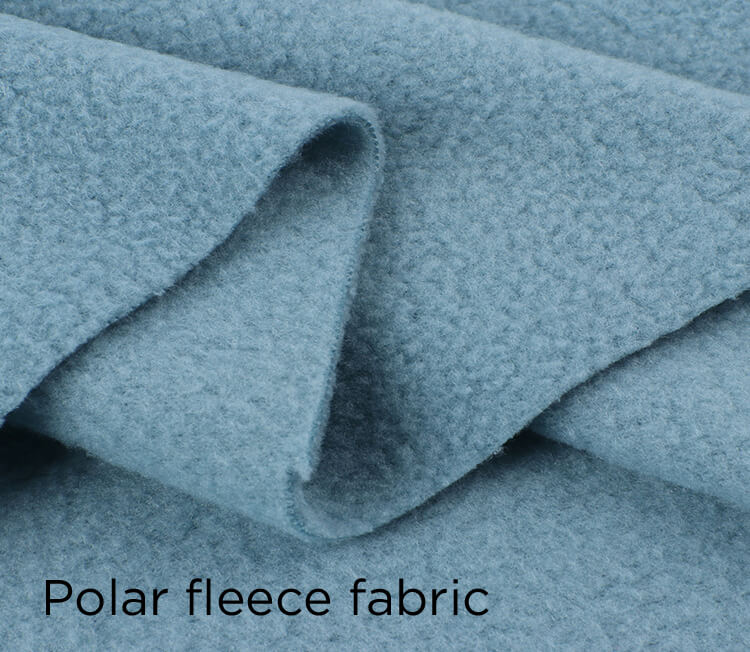
Here are some key characteristics of polar fleece fabric:
- Warmth: Polar fleece is highly effective at trapping body heat, providing excellent insulation. It is designed to retain warmth and keep the wearer comfortable in cold temperatures.
- Softness: Polar fleece has a luxurious, soft feel that is gentle against the skin. It is often described as being cozy and comfortable to wear.
- Lightweight: Despite its warmth, polar fleece is relatively lightweight, making it ideal for layering or wearing in cool to cold weather without feeling bulky.
- Breathability: Polar fleece has good breathability, allowing moisture to escape and preventing overheating. It wicks away sweat and moisture, keeping the wearer dry and comfortable.
- Quick-drying: Polar fleece has the ability to dry quickly, making it convenient for outdoor activities or situations where moisture management is important.
- Durability: Polar fleece is known for its durability and resistance to pilling, fraying, and shrinking. It retains its softness and shape even after multiple washes.
- Versatility: Polar fleece comes in a wide range of colors, patterns, and thicknesses. It is a versatile fabric that can be used for various applications, including jackets, hoodies, blankets, hats, scarves, and other cold-weather garments.
Due to its warmth, softness, and practicality, polar fleece fabric is widely used in outdoor apparel, sportswear, and casual clothing. It provides a comfortable and cozy option for staying warm in colder climates or during outdoor activities.
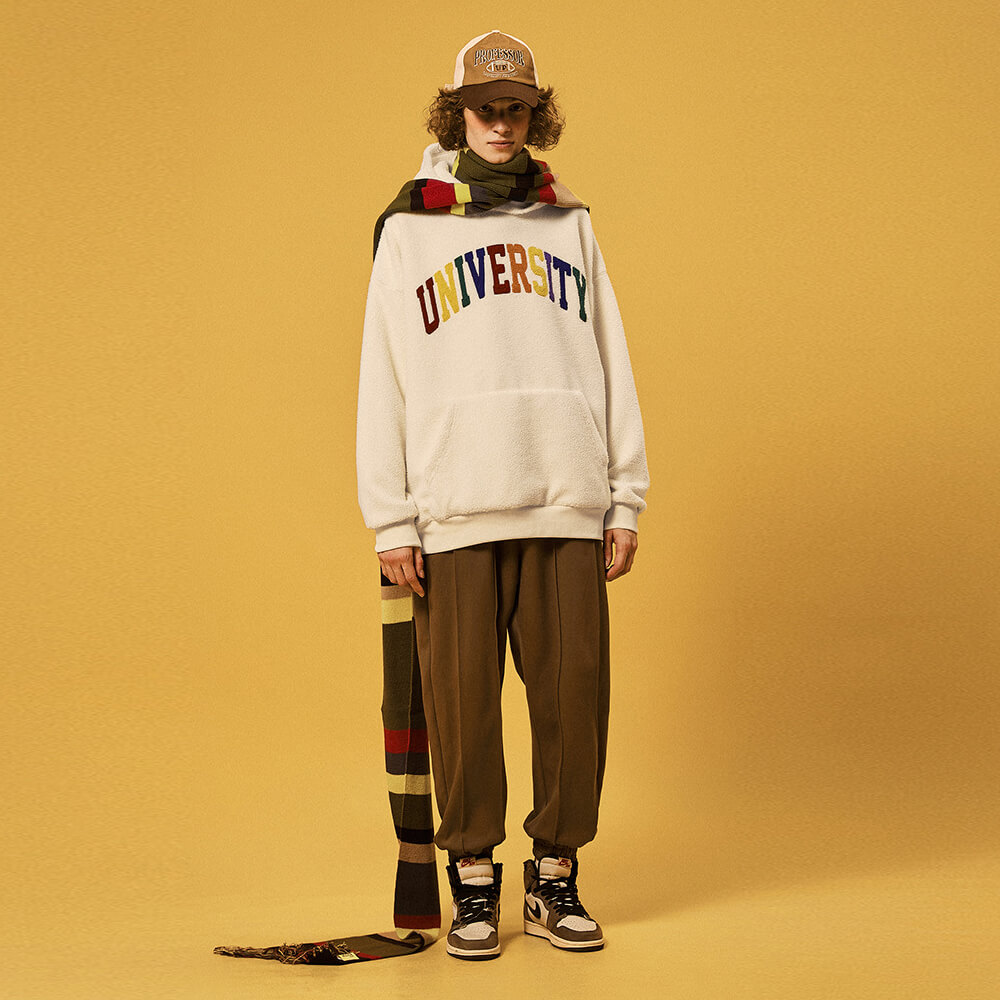
Want to be an Expert in Hoodie Fabrics? Don’t miss!
When it comes to hoodie fabrics, the yarn counts (10S, 16S, 21S, and 32S) can affect the overall characteristics of the fabric. Normally, the smaller larger number, the softer fabric.
Here’s how they can differ:
10S: A hoodie fabric made with 10S yarn will have a coarser texture. It is suitable for those who prefer a more substantial feel.
16S: Hoodie fabrics with 16S yarn will be a bit softer compared to 10S, offering a slightly smoother texture.
21S: Fabrics made from 21S yarn will have a softer texture compared to both 10S and 16S. Hoodies made from 21S fabric will be more comfortable, making them suitable for milder temperatures or for those seeking a lighter layer.
32S: Hoodie fabrics with 32S yarn have a soft, luxurious feel. This fabric is often used for high-quality hoodies that prioritize comfort and a sleek appearance. Hoodies made from 32S fabric can be ideal for layering or for those who prefer a lightweight and smooth texture.
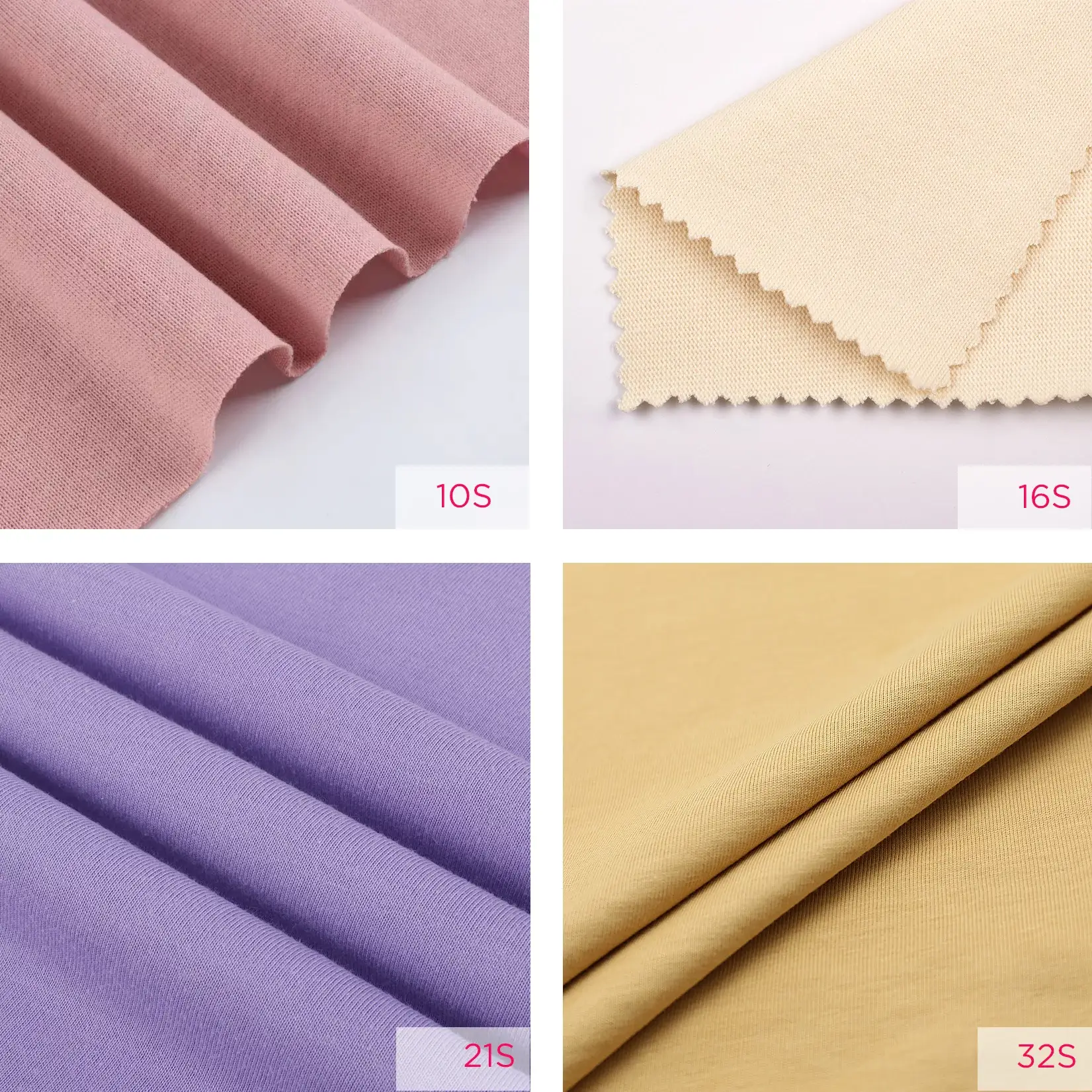
It’s important to note that the yarn count is not the only factor that determines the quality or characteristics of a hoodie fabric. Other factors such as the fiber content, knit structure, and finishing treatments can also influence the overall look and feel of the fabric. When choosing a hoodie fabric, consider the desired weight, texture, comfort, and intended use to ensure it aligns with your preferences and requirements.
Wrapping up
That’s all my guide to hoodie fabrics. As a beginner, it can be challenging to choose the right fabric. I recommend observing some nice brands first to see which fabrics they use. If you’d rather have someone else handle this difficult task, leave it to us. Over the past 19 years, we have created clothing for hundreds of brands. Contact us today, I trust you will like our quality and service.
